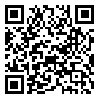Volume 17, Issue 1 (7 2004)
J Dent Med-tums 2004, 17(1): 41-48 |
Back to browse issues page
Download citation:
BibTeX | RIS | EndNote | Medlars | ProCite | Reference Manager | RefWorks
Send citation to:



BibTeX | RIS | EndNote | Medlars | ProCite | Reference Manager | RefWorks
Send citation to:
Talaeipour A, Panjnoush M, Anbiaei N. An evaluation of the subtraction photoshop software accuracy to detect minor changes in optical density by radiovisiography. J Dent Med-tums 2004; 17 (1) :41-48
URL: http://jdm.tums.ac.ir/article-1-381-en.html
URL: http://jdm.tums.ac.ir/article-1-381-en.html
Abstract: (6993 Views)
Statement of Problem: Subtraction is a newly presented radiography technique to detect minor density changes that are not visible by conventional radiography.
Purpose: The aim of this In-vitro study was to evaluate the efficacy of photoshop subtraction software for detecting minor density changes between two dental images.
Materials and Methods: In this research, five dried human mandibles were held in fixed position while thin aluminium sheets were superimposed on each mandible on the 1th and 2nd molar teeth regions.A reference image, without aluminium sheet placement, was obtained from each mandible subsequently series consist of 20 images with aluminium sheets, ranging from 50p. to "5Q0"x were recorded by radiovisiography (RVG) system. Initial images were subtracted from subsequent ones by Photoshop subtraction software. The difference in density between the two images at the 1st and 2nd molar sites was related to the aluminium sheets. The optical density of aluminium sheets was determined by densitometer.
Results: In the present study, 6.6% of the optical density changes of the minimum aluminium thickness as 300u. could be detected by photoshop software software.
Conclusion: The findings of this study showed that the accuracy of photoshop subtraction software was equal to that of the conventional subtraction softwares. Additionally, the accuracy of this software was proved to be suitable for clinical investigations of small localized changes in alveolar bone.
Purpose: The aim of this In-vitro study was to evaluate the efficacy of photoshop subtraction software for detecting minor density changes between two dental images.
Materials and Methods: In this research, five dried human mandibles were held in fixed position while thin aluminium sheets were superimposed on each mandible on the 1th and 2nd molar teeth regions.A reference image, without aluminium sheet placement, was obtained from each mandible subsequently series consist of 20 images with aluminium sheets, ranging from 50p. to "5Q0"x were recorded by radiovisiography (RVG) system. Initial images were subtracted from subsequent ones by Photoshop subtraction software. The difference in density between the two images at the 1st and 2nd molar sites was related to the aluminium sheets. The optical density of aluminium sheets was determined by densitometer.
Results: In the present study, 6.6% of the optical density changes of the minimum aluminium thickness as 300u. could be detected by photoshop software software.
Conclusion: The findings of this study showed that the accuracy of photoshop subtraction software was equal to that of the conventional subtraction softwares. Additionally, the accuracy of this software was proved to be suitable for clinical investigations of small localized changes in alveolar bone.
Keywords: Dental radiography, Subtraction radiography
| Rights and Permissions | |
 |
This work is licensed under a Creative Commons Attribution-NonCommercial 4.0 International License. |




